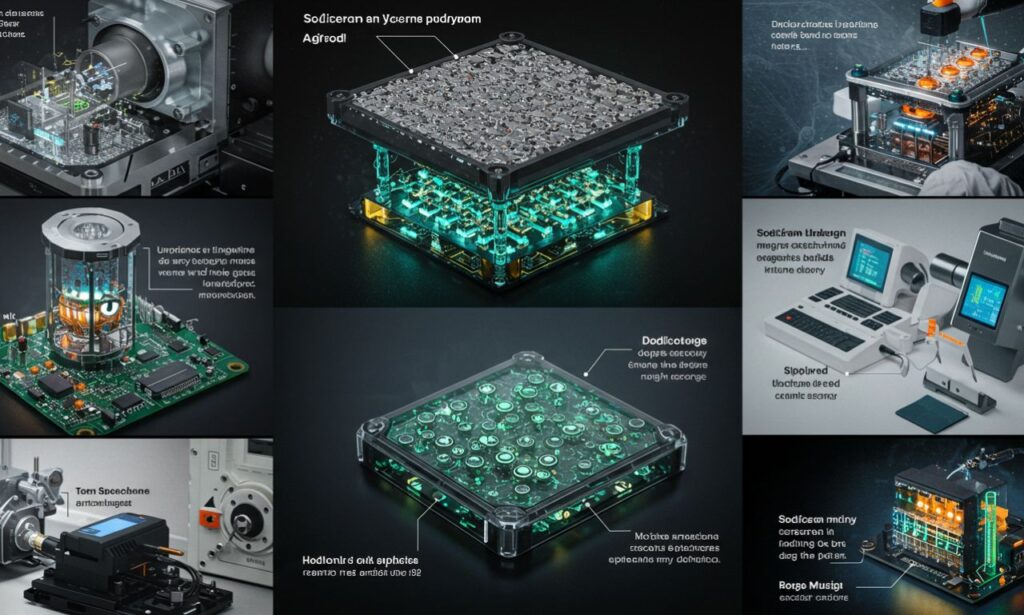Sodiceram is a term gaining attention in industries such as ceramics, construction, and materials science. Known for its aesthetic appeal and durability, sodiceram has become synonymous with innovation and functionality. This article explores what sodiceram is, where it is used, and why it matters in today’s evolving industrial landscape.
What Is Sodiceram?
Sodi-ceram refers to a specialized ceramic or ceramic-like material developed through advanced manufacturing processes. It is engineered for strength, heat resistance, and versatility, making it highly suitable for a wide range of applications. The name sodiceram is often associated with cutting-edge ceramic products that combine both traditional craftsmanship and modern technology.
Key Characteristics of Sodiceram
1. Durability and Strength
One of the standout features of sodiceram is its resistance to wear, impact, and extreme temperatures. This makes it ideal for long-term usage in harsh environments.
2. Design Flexibility
Sodiceram can be molded or shaped into various forms and sizes, allowing designers and engineers to create customized solutions for diverse needs.
3. Thermal Resistance
Its ability to withstand high heat makes sodiceram a preferred choice in industries where temperature tolerance is crucial.
4. Chemical Stability
It shows strong resistance against acids, alkalis, and other corrosive chemicals, ensuring longevity and reduced maintenance.
Applications of Sodiceram in Modern Industries
1. Construction and Architecture
Sodi-ceram tiles and components are increasingly used in modern architecture. Its sleek look and robustness make it perfect for floors, walls, and façades. Architects prefer sodiceram for both indoor and outdoor applications because of its minimal maintenance and high aesthetic value.
2. Interior Design
In interior decor, sodiceram is used in bathroom vanities, countertops, and even decorative panels. Its polished finish and design flexibility cater to both classic and contemporary styles.
3. Automotive and Aerospace
Thanks to its heat resistance and mechanical strength, sodiceram finds its way into high-performance vehicle components, including engine parts and protective shields in aerospace technologies.
4. Electronics
Sodi-ceram materials are employed in electronic substrates and insulating layers due to their dielectric properties and temperature resilience.
5. Medical Equipment
In the medical field, sodi-ceram is used in surgical tools, implants, and diagnostic devices due to its non-reactive nature and biocompatibility.
Sodiceram in Sustainable Design
Sodi-ceram is playing a pivotal role in sustainable building and manufacturing practices. Its long lifespan reduces the need for frequent replacements, while many sodi-ceram products are recyclable and environmentally safe. The energy used in its production is also increasingly derived from renewable sources, reducing its carbon footprint.
Innovations in Sodiceram Manufacturing
Modern manufacturing techniques have made sodiceram even more adaptable and high-performing. Some innovations include:
-
3D Printing of Ceramics: Allows intricate sodiceram designs with precision.
-
Nano-enhanced Surfaces: Improves its antibacterial and self-cleaning capabilities.
-
Custom Glazing Techniques: Offer a wider variety of textures and color palettes for architectural use.
Maintenance and Care for Sodiceram Products
Maintaining sodi-ceram is relatively easy:
-
Clean regularly with mild soap and water.
-
Avoid abrasive cleaners to maintain its glossy finish.
-
Periodic resealing (in case of certain glazed versions) helps maintain longevity.
Unlike some natural stones and tiles, sodi-ceram requires minimal maintenance and retains its appearance for years.
Challenges and Limitations
Despite its benefits, sodi-ceram has some limitations:
-
Cost: Advanced sodiceram products can be more expensive than traditional materials.
-
Installation: Specialized tools or skills may be required for cutting and installation.
-
Availability: In some regions, premium sodiceram products may be limited to niche suppliers.
However, as demand grows, these challenges are likely to diminish.
Future Trends in Sodiceram Technology
The future looks promising for sodi-ceram:
-
Smart Ceramics: Integration with sensors and electronics for smart homes and medical devices.
-
Green Manufacturing: Emphasis on zero-waste and carbon-neutral production.
-
Customization: On-demand design and rapid prototyping for architects and engineers.
As industries continue to innovate, sodi-ceram will evolve with smarter applications and broader accessibility.
Case Studies
Case Study 1: Eco-Friendly Homes
A sustainable housing project in Northern Europe used sodi-ceram for exterior cladding, reducing maintenance costs and improving energy efficiency. Residents reported higher satisfaction due to both aesthetics and performance.
Case Study 2: Hospital Facilities
A major hospital in Asia replaced outdated tiles with antimicrobial sodiceram panels. The result was a notable reduction in infection rates and an improvement in cleanliness standards.
Case Study 3: Space Engineering
An aerospace firm integrated sodi-ceram into protective tiles for spacecraft. Testing showed that the material withstood extreme temperatures better than traditional materials, enhancing spacecraft longevity.
Choosing the Right Sodiceram Product
When selecting sodiceram for a specific project:
-
Assess Your Needs: Is it for heat resistance, aesthetics, or structural strength?
-
Check Certifications: Choose products with proven quality and sustainability ratings.
-
Compare Brands: Not all sodi-ceram is created equal; compare performance metrics and user reviews.
Conclusion
Sodi-ceram is more than just a material—it’s a modern solution for industries seeking durability, sustainability, and innovation. From architecture to aerospace, it is helping shape the future with resilience and elegance. As technology evolves, sodi-ceram will undoubtedly play a central role in many sectors that demand high-performance and aesthetically pleasing materials.
-







